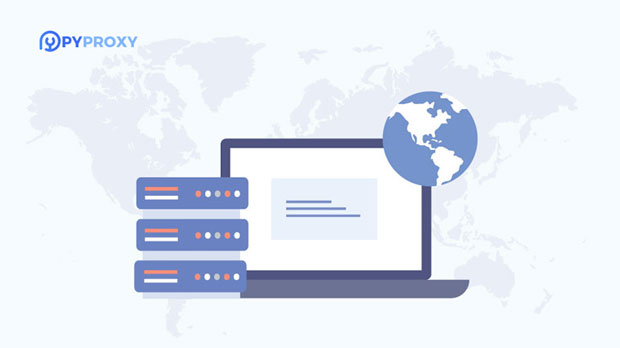When it comes to selecting a socks5 proxy server for applications that require high bandwidth, performance and reliability are paramount. High-bandwidth applications, such as video streaming, gaming, or large-scale data transfers, place significant demands on network speed and stability. For such use cases, the choice of socks5 proxy server plays a critical role in ensuring smooth performance and minimizing latency. This article will explore the key factors to consider when selecting a fast and efficient SOCKS5 proxy server for high-bandwidth applications. We will discuss server location, speed, security, scalability, and other essential features that impact your overall experience. 1. Understanding socks5 proxies and Their RoleSOCKS5 proxies act as intermediaries between your device and the internet, routing your network traffic through a remote server. Unlike HTTP proxies, which only handle web traffic, SOCKS5 proxies can manage all types of traffic, including FTP, SMTP, and P2P. This makes them highly versatile, especially for high-bandwidth applications where multiple types of data are transferred.SOCKS5 proxies offer several advantages, such as better anonymity, enhanced security, and lower overhead, compared to older proxy protocols. However, for applications that require significant bandwidth, selecting the right server with low latency and high throughput is critical to ensuring optimal performance.2. Factors to Consider for High-Bandwidth ApplicationsTo ensure that the SOCKS5 proxy server meets the needs of high-bandwidth applications, several factors need to be carefully evaluated. Below, we will break down these factors to help you make a more informed decision.2.1. Server LocationThe physical location of the SOCKS5 proxy server plays a significant role in determining both speed and reliability. Proximity to the end-user is crucial; the closer the server is to your geographic location, the less likely it is that your connection will suffer from high latency or packet loss.For example, if you're streaming videos or gaming in real-time, a server located within the same region or continent as your device will generally provide faster speeds and better stability. On the other hand, using a server located far away from you might cause delays, buffering, and a degraded user experience.2.2. Speed and ThroughputHigh-bandwidth applications require a proxy server capable of handling large amounts of data without bottlenecks. A fast SOCKS5 proxy server should offer high throughput, which is essentially the amount of data the server can transmit per second.When evaluating the speed of a SOCKS5 proxy server, consider not only the server's download and upload speeds but also its ability to handle bursts of traffic, especially during peak usage periods. Look for a server with minimal packet loss, low jitter, and high data transfer rates.2.3. Server Load and ScalabilityThe load on the proxy server can directly impact its performance. A highly congested server will experience delays, resulting in slow speeds and potentially unreliable connections. Ensure the proxy server you select has sufficient capacity to handle large amounts of traffic without degradation in service.Additionally, scalability is an important factor. As your high-bandwidth needs grow, the proxy service should be able to handle increased traffic seamlessly. Whether it's upgrading to a more powerful server or adding additional proxy nodes to distribute the load, ensure the provider offers flexibility and resources for future growth.2.4. Security FeaturesWhile security may not directly affect the speed of a SOCKS5 proxy, it is an essential consideration for high-bandwidth applications that involve sensitive data. Look for a SOCKS5 proxy that offers strong encryption methods, such as AES (Advanced Encryption Standard), to protect your data while in transit. This is especially important for applications dealing with personal information, financial transactions, or confidential business data.Additionally, make sure the SOCKS5 proxy supports authentication methods (e.g., username/password or IP-based authentication) to restrict unauthorized access to your network, ensuring that only authorized users can route traffic through the proxy.2.5. Compatibility with ApplicationsDifferent high-bandwidth applications may have unique network protocols or requirements that must be supported by the SOCKS5 proxy. Ensure that the proxy you choose is compatible with the specific applications you intend to use, whether it's for large file transfers, video streaming, gaming, or VoIP (Voice over Internet Protocol) services.For example, applications that rely on real-time data transmission, such as online gaming or video conferencing, may require a proxy with low latency and the ability to handle UDP (User Datagram Protocol) traffic efficiently. Conversely, file-sharing or P2P applications may require a proxy that can handle TCP (Transmission Control Protocol) traffic with high throughput.3. Testing and Benchmarking PerformanceBefore committing to a SOCKS5 proxy service for high-bandwidth applications, it is essential to conduct thorough testing. Many proxy providers offer free trials or money-back guarantees, which can be leveraged to assess the performance of the service in real-world conditions.During testing, monitor key metrics such as latency, download/upload speeds, jitter, and packet loss. Consider using tools like speed test websites or specialized network monitoring software to gather performance data. This will help you evaluate whether the SOCKS5 proxy meets the specific needs of your high-bandwidth application.4. Redundancy and ReliabilityReliability is another critical aspect of choosing a SOCKS5 proxy for high-bandwidth applications. Downtime or service interruptions can severely affect performance, especially for applications that demand continuous data flow.To ensure reliability, check if the SOCKS5 proxy service offers redundant systems, such as backup servers or failover mechanisms, to handle server outages or technical issues. Additionally, you may want to inquire about the provider's uptime guarantees and Service Level Agreements (SLAs).5. Cost ConsiderationsWhile performance is the top priority, cost is also an important factor. High-performance SOCKS5 proxies tailored for high-bandwidth applications are typically more expensive than basic proxy services. However, the additional investment may be worthwhile if it ensures smooth performance and minimal downtime for your application.Compare the pricing models of various proxy providers to ensure you are getting the best value for your money. Look for transparent pricing structures and ensure that the service offers sufficient bandwidth and features for your needs at a reasonable cost.ConclusionSelecting the right SOCKS5 proxy server for high-bandwidth applications requires a careful balance of speed, reliability, security, and cost. Server location, speed, server load, scalability, and compatibility with your applications should be the primary considerations when making a decision. By thoroughly testing the service and considering your long-term needs, you can ensure a smooth and efficient proxy experience for your high-bandwidth applications.
Jan 03, 2025
![arrow]()



















































